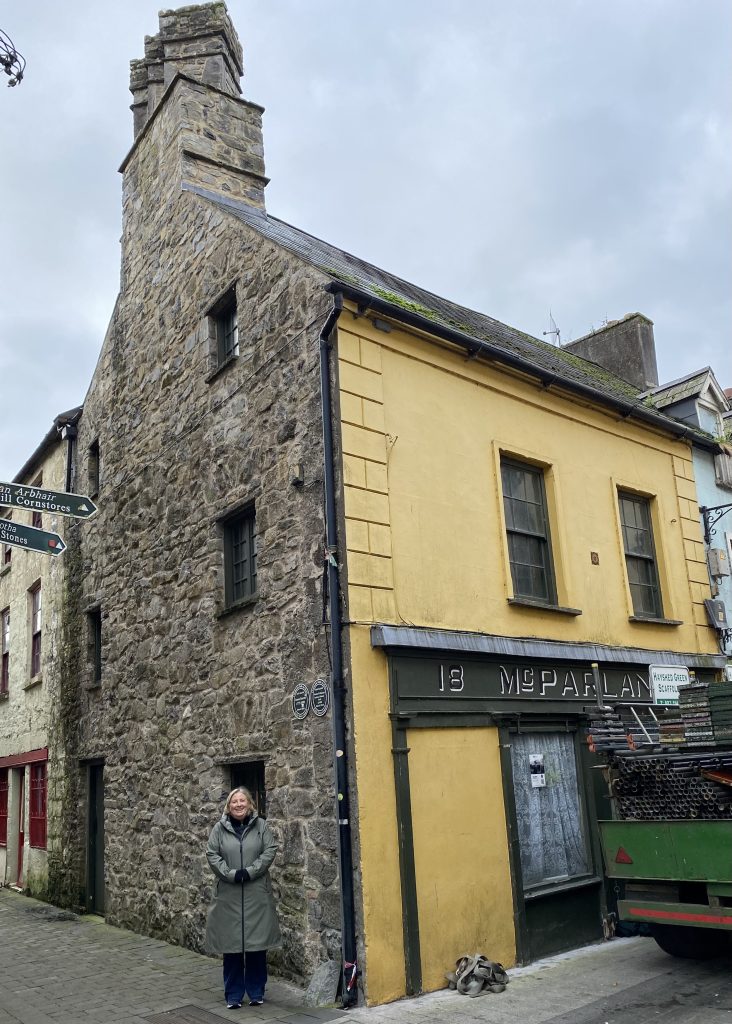Heritage scheme could bring new purpose to the home of famous Ennis actress
THE promoters of a major initiative to select one of the 117 protected structures in Ennis Town Centre and repurpose it for community use are open to the possibility of extending their shortlist to include a 17th century house that was the childhood home of an internationally renowned actress.
The Town Centre First Heritage Revival (THRIVE) scheme initially focused on three buildings which were identified at a public consultation session at the Ennis Municipal Offices on Monday evening as the Chapel Lane Community Centre, the Presbyterian Hall on Harmony Row and the Cloister bar and restaurant on Abbey Street.
Earlier this year, Ennis was awarded €194,473 from the initial THRIVE fund of €5million which was divided between 26 local authorities to identify suitable projects and ensure they are ready to get under way. The next round of funding will help offset the more significant cost of repurposing the buildings and ensuring their long term sustainability.
Following submission from a number of local historians at Monday’s meeting, it was agreed that a building on Parnell Street, that has been commended by the National Monuments Service, could be added to the list.
Known as McParland’s, the two-storey house is noted for a triple diagonally set Jacobean chimney, dating from 1600, on its east gable. Modifications in the 19th century caused instability to the gable and significant restoration work was undertaken in 2012 when a cutting below ground level showed that it was not the earliest building on the site.
Apart from its archaeological importance, it was also the childhood home of Harriet Smithson, who was born in Ennis in 1800 and went on to become a famous actress in London and Paris.
She was also the first wife and muse of composer Hector Berlioz whose most famous work, Symphonie Fantastique, is a tribute to his passion for the Ennis woman.

Welcoming the building’s possible inclusion in the THRIVE scheme, Clare Fine Gael General election candidate Leonora Carey said it could serve a dual purpose of preserving a hugely important historical structure and providing a major attraction for locals and visitors alike.
“An imaginative repurposing of such a unique building as a living monument to Clare’s musical heritage would add real substance to the town’s cultural identity.
“McParland’s could be developed as a centre to highlight the skills of traditional instrument makers along with hosting events focusing on our musical and built heritage. Watching skilled musicians crafting delicate instruments like uileann pipes, concertinas and fiddles would be a visitor attraction of authentic cultural significance,” Ms Carey added.
The former Presbyterian Hall which forms part of the de Valera library campus on Harmony Row was one of the three buildings included in the initial selection. Among the options for consideration are a series of individual studio spaces with a larger area for exhibitions; a workshop for a range of craft uses and a community/performance space for meetings or events. The proposal does not include the library building itself as it is not a protected structure.
The Chapel Lane Community Centre, adjacent to the Lower Market Street Car Park, was also on the shortlist. Although currently in use as a meeting place; a venue for counselling sessions and a weekly craft market, it is proposed to use it more intensively for a range of community activities. These include artist studios across both floors and a small exhibition space; a craft school and ‘Fab Lab’ to support local creative networks and a community/performance space.
The third building under consideration is The Cloister bar and restaurant, alongside the 13th century Ennis Friary on Abbey Street. A multi-million euro rebuild during the ‘Celtic Tiger’ years involved the restoration of some of the 13th century national monument. Options for the THRIVE redevelopment include its repurposing as artist studios, workshops and classrooms; a craft school and a community/performance space.


